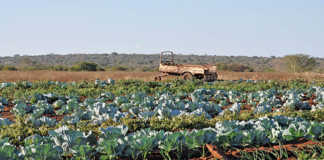The annual Birding Big Day takes place on Saturday, 29 November in your garden, park, or wherever you are.
The event is part of Birdlife South Africa’s mission to promote the enjoyment, conservation, study and understanding of wild birds and their habitats.
For more information on the event visit www.birdlife.org.za or click here to download the BirdLife South Africa official Checklist of Birds 2014.
Farmer’s Weekly has put together a gallery of the common bird species found in SA. The stunning bird photos were supplied by The Ultimate Companion for Birding in Southern Africa. This two-volume, large format coffee table book boasts over 1 400 spectacular full-colour images of 960 species combined with expert insights from 18 top birding authorities (R999 VAT inclusive which includes delivery within South Africa, plus a free eBook valued at R350). Visit www.birdbook.co.za to purchase a copy.
| Name: African Paradise Flycatcher (Terpsiphone viridis)
Description – Striking chestnut brown upperparts and grey underparts. The male has a distinct blue beak with a pair of elongated central tail feathers. Habitat – Evergreen forests, woodland, parks and gardens. Voice – ‘Chwee-tor’ alarm call. |

Photo: Albie Venter
|
| Name: African Penguin (Spheniscus Dermersus)
Description: striped head and sides; some may have a narrow double breast band. Habitat: – coastal waters Voice: loud donkey – like braying calls at breeding colonies. |

Photo: Peter Chadwick
|
| Name: Bokmakierie (Telophorus Zeylonus) Description: an olive-green, black and yellow bushshrike. Habitat: Open fynbos, bush and montane scrub. Voice: a range of whistle calls or the ‘bok-ma-kie-rie’ call |

Photo: Richard Grant
|
| Name: Cape Turtle Dove (Streptopelia Capicola)
Description: also known as ring-necked dove because of a black half-collar on the hindneck; grey upperparts with a pale grey head; dark eyes. Habitat: Open Savanna woodlands, farmlands. Voice: High-pitched, crooning ‘kuk-KOORR-ru’ |

Photo: Marietjie Froneman
|
| Name: European Bee-eater (Merops Apiaster)
Description – Chestnut coloured crown and back, golden mantle, yellow throat; blue breast and belly and white forehead. Habitat: Wide habitat tolerance. Voice: Musical, bell-like note; “prruip” or “pruuk |

Photo: Hennie Cilliers
|
| Name: Egyptian goose (Alopochen Aegyptiaca)
Description: a goose-like duck; brown back and grey underparts, with a distinct white bar on the wing; dark brown face, neck ring and breast patch. Voice – loud hoarse honking by females – male hisses. |

Photo: Marietjie Froneman
|
| Name: Helmeted Guineafowl – (Numida Meleagris)
Description: uniformally spotted with white; blue and red wattles – a pale bony casque on the crown. Voice: loud crowing |

Photo: Isak Pretorius
|
| Name: House Sparrow (Passer Domesticus)
Description: upperparts are reddish-brown with a grey rump and black bib. Habitat: urban and surburban areas, rural homesteads. Voice: A soft ‘chirrup’ sound |

Photo: Albert Froneman
|
| Name: Speckled pigeon (Columba Guinea)
Description: blue-grey upperparts with a dull brick red neck, back and inner wing coverts; bare red skin patch around eyes, red legs and grey bill with a whitish cere. Habitat: – Mountains, cliffs and urban buildings Voice: deep mellow ‘doo-doo-doo’ |

Photo: Martin Benadie
|
| Name: Yellow-billed Duck (Anas Undulata) Description: has a distinctive bright yellow bill and a speckled brown head. Habitat – open water in pans and slow flowing rivers. Voice – male gives low whistles; females quack loudly. |

Photo: Jessie Walton
|










